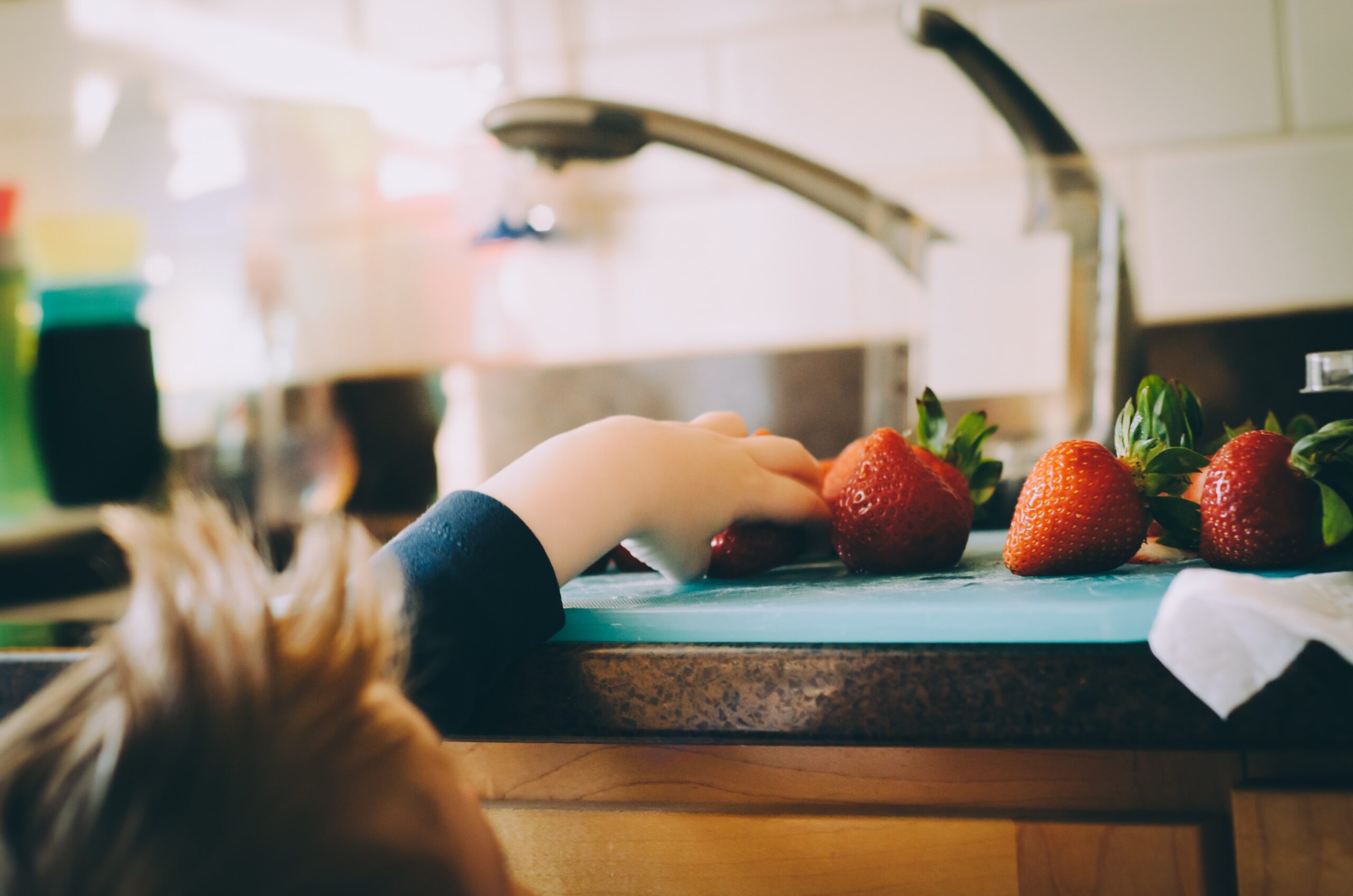Food Recovery Journal
Reducing Waste With Kids
April 5, 2022

Sustainability might be too big of a word to teach a pre-school child, but the idea can be taught!
As an adult it can be easy to make small changes to your habits to reduce food waste, but what about when you have kids? Saving food is not something that naturally comes to mind for a child, and introducing new foods into their diet can be a long and wasteful process.
The following tips should help your home save time, energy, and food!
For the youngest:
- Feed them your food
Spare yourself the job of short-order cook by feeding your child the same food you eat, but puréed for the little ones. Serve yourself a smaller portion, knowing you’ll likely finish what they don’t. If you start when they’re young, this tip will help you go much further with the following steps.
- Serve tiny portions
We want our kids to try new foods, but studies show many children have to try a food up to 15 times before accepting it! Start with small portions and minimize untouched food. You can always offer seconds when they’re interested.
- Re-introduce the food
Speaking of those barely touched portions — save them! Either serve leftovers again in the next couple of days, or incorporate them into something else. Put leftover milk in your morning coffee and leftover veggies in a stir fry. Purees can be added to pasta sauce or soup.
- Limit snacking
Snacking on the same foods every day and going into a meal with a full stomach makes it more difficult for a child to have an interest in trying new foods. Snack time can also be used for re-introduction to new foods, although this might require some creativity if it isn’t well-disguised!

FOR NEW EATERS:
- Forget 5 seconds
Place a clean mat below your small child’s high chair before serving food. That way, food that falls (or gets jettisoned) off the tray is still safe to eat and can be placed back on their plates.
- Serve finger foods
If utensils are causing a lot of food spills, consider switching to finger foods more often. Little nuggets don’t spill, can be easily recovered off the mat below, and allow your child to learn to feed themself independently.
- Don’t engage in the food fight
Kids throw food on the floor to test their boundaries, but it doesn’t do anybody good to clean an entire meal off the ground. Stay nearby as they’re learning to eat and intervene before the food starts flying. Give them a specific place on their plate or tray to put food instead. They’ll eventually get it, and you’ll have less cleaning to do as a result.

As They Get Older:
- Inspect the lunch boxes
Pack reusable containers with lunch, and have your kids bring home leftover food and drinks. Asking why some food went uneaten will help you offer the right foods in the right amounts next time. Sometimes small changes like cutting foods into smaller pieces can make lunch more appealing.
- Use the IKEA effect
People tend to like things they helped make, and children are no different. Involve your kids in cooking and give them choices when possible. Allow them to serve themselves in the portions they want, within reason.
- Garden and visit a farm
Kids who are involved in growing fruits and vegetables are more likely to eat them. Give your whole family an appreciation and respect for the resources required to bring food to the table by participating in the local food systems that bring the food into the pantry.
While many of these tips can help you reduce food waste in your home, it is equally as important to let your child know why it is important that food is eaten and doesn’t end up in the trash. The World Wildlife Fund has several extensive toolkits for kids ranging from K-12 with educational activities and ways to get your child involved as a food waste warrior! You can also print out our We Don’t Waste coloring page to get your child engaged in the conversation of food waste.
Are you an educator? We Don’t Waste has an engaging education program for schools that can include a food waste audit performed during the children’s lunch period! It’s free, flexible, and content can be tailored to your class’s level and interests.